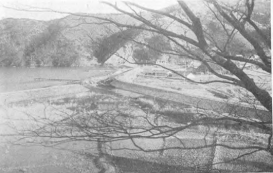Located on the Pacific Rim and surrounded by the Pacific and Japanese Seas, Japan has both profited from the resources of the ocean and suffered from its dangers. With industrial modernity and urbanization magnifying the risk of large-scale natural disasters, disaster preparedness became increasingly viewed as vital to success on the global stage. Around 1900, Japan became an internationally trusted source for disaster-related knowledge, especially concerning earthquakes and tsunamis. On the other hand, Japan imported European and American scientific knowledge concerning flood control and coastal protection. In the 1920s and 1930s, Japanese society began to develop a national disaster prevention system, which relied heavily on scientific and expert knowledge. It was institutionalized in the early 1960s and contributed to massive environmental changes. This project traces the global circulation of disaster knowledge from a Japanese perspective and asks what kind of knowledge was selected for dissemination and how this was adapted to the natural environment. Secondly, it asks how the Second World War and the Cold War settings influenced the operation of disaster prevention regimes, both nationally and globally.

Reconstruction site in the village of Ohara (today Ishinomaki) in Miyagi prefecture, following the Shōwa Sanriku Tsunami of 1933. Naimu daijin kambō toshikeikakuka, Sanriku tsunami ni komaru higaichōson no fukkōkeikakusho, March 1934, chart 2.
Project
(2017-)
Disaster Preparedness in Japan and Global Transfer of Knowledge 1890–1970
- Julia Mariko Jacoby
